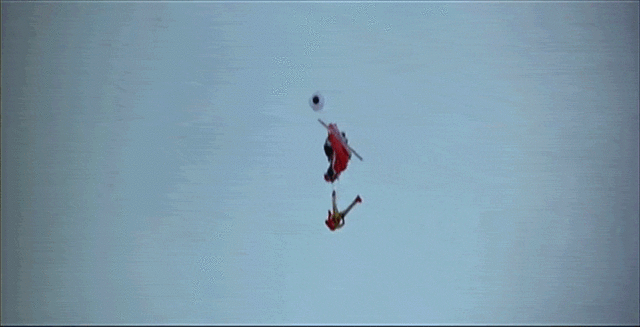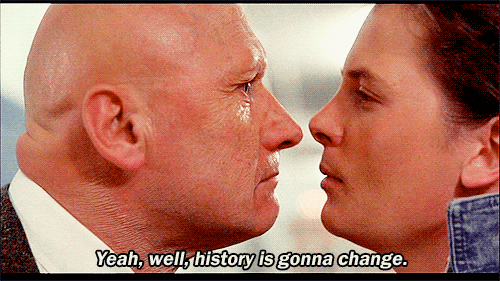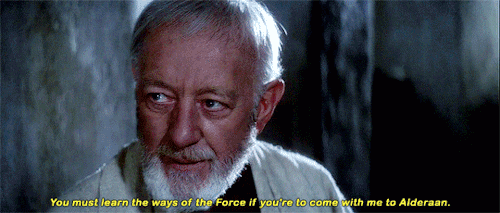ACT 1: THE SET UP

ACT 1: THE SET UP
I’ve read several dozen books on writing, and always come back to three.
The best resources for writing in my opinion are Joseph Campbell’s Hero With A Thousand Faces wherein he outlines the Monomyth or the Hero’s Journey, Aristotle’s Poetics (I prefer the Poetics for Screenwriters, which is basically the CliffsnNotes version for people like me) and Robert McKee’s Story.
Campbell’s monomyth, or as it is better known, the Hero’s Journey, is the common template that most stories utilize, going all the way back to the Greeks. It involves a hero who goes on an adventure, and in a decisive crisis wins a victory, and then comes home changed or transformed.
From Aristotle I borrowed his concept of peripeties: moments when your hero learns something which has an impact on the direction of the story.
And from McKee, I borrowed his the construction of single scenes. McKee’s strategy is to change the positive and negative charges of a value to create effective scenes. What this boils down into is starting every scene with the character in either a positive or negative state, and then having them change to the opposite. So if the character starts off conflicted a bit of resistant to making a change, then the scene progresses him to becoming determined and enthusiastic at the end of the scene.
I also extracted concepts and terms from a few other screen and comic writing books. Among them are Blake Snyder’s Save the Cat!, Syd Field’s Screenplay, and John Truby’s The Anatomy of Story. Basically I distilled all of these books into a method that helps me structure my stories.
What follows is a breakdown of each beat that I use to create my story. Once again, this is a fluid process, and I have picked up terms and from a smattering of sources that make the most sense to me. I’ve also chosen to use moments from films as examples as opposed to examples from comics because they tend to be more ubiquitous, and because animated gifs are cool.
The Overture
Just like the name implies, this is where you set everything up. Tone, theme, characters, environment, and everything else that is the foundation of the story is established here.
My personal taste in setting up a story is to follow what I call The Overture, in which the first scene is a self-contained, micro version of the entire series in macro. The term is taken from opera or classical symphony performances. An overture exposes the audience to the major themes that will occur in the following performance. They are usually longer than a simple prelude, and can very often be performed as a stand alone piece.
James Bond films employ this scheme. They nearly always begin with a 10 minute mini movie within the movie. We see Bond in an exotic foreign locale with a beautiful woman, get attacked by some baddies whom he defeats by utilizing his MI6 training, fighting skills, gadgets, and ingenuity, all of it made complete with a dose of British wit.
Titles.

And then that’s basically the template for the rest of the 90 minute run time. Bond will seduce a comely woman in a far off romanticized version of an exciting city, fight some bad guys, use some spy toys, drive a cool car, and then save the day.
Credits.
Or in other words, to borrow from Hermes Trismegistus, “As above, so below.”
So that’s what I tend to do. Tell the story in micro, then retell it in macro. You’ll see a pretty blatant example of how I did this in The Führer and the Tramp in a subsequent post.
Theme Stated
I borrowed this bit from Blake Snyder’s Save the Cat!. The theme is the kernel of truth I want to reveal by the end of the story. Usually, it is spoken to the main character or in their presence, but they don’t understand this truth…not until they go on the journey to find it.
In Back to the Future, the Hill Valley High School Principal, Mr. Strickland corners Marty McFly and tells him “No McFly ever amounted to anything in the history of Hill Valley!” To which Marty responds with the theme of the movie, “Yeah, well, history is gonna change.”

And then Marty proceeds to change history.
Inciting Incident
As screenwriting guru Syd Field describes it, the Inciting Incident is what sets the story in motion.
In Star Wars, this is when Luke triggers the holographic message of Leia stored in R2-D2’s memory.

Catalyst
Hot on the heels of the Inciting Incident, the catalyst is the Call to Adventure part of Joseph Campbell’s Monomyth. This is the moment where the opportunity to go on a journey is presented to the main character. Life as it is now changes.
In Star Wars, many people mis-attribute Luke’s Call to Adventure to being “Help me Obi Wan Kenobi, you’re my only hope” when in fact it happens later. Leia’s hologram is not calling for Luke to go on an adventure. No, the Call to Adventure comes from Obi Wan and is directed at Luke a bit later in the movie.

It may seem like a slight difference of opinion, or a semantical argument, but it is very important when it comes to determining the pacing. There is a bit of breathing room between the Inciting Incident and the Call to Adventure. The initial impetus for Luke after seeing the hologram is to return the droid to Obi Wan. It plants the seed of the possibility for adventure, but Luke’s stasis is challenged not by the hologram but by Obi Wan, to whom he immediately refuses the call by saying “Alderaan? I’m not going to Alderaan. I’ve got to go home. It’s late, I’m in for it as it is.”
The reason that this distinction is important to me is that it forces the path of the story to be less linear, and more indirect. It sets up more plot beats instead of rushing the importance of the Act 1 set-up. It helps me put on the breaks a little bit, and make sure that I sufficiently set up each element, create a character that is dynamic and makes his or her own decisions, and give the audience a moment to digest it before barreling ahead.
The introduction of the catalyst sends our protagonist headlong into Act 2.1: The Call to Adventure.